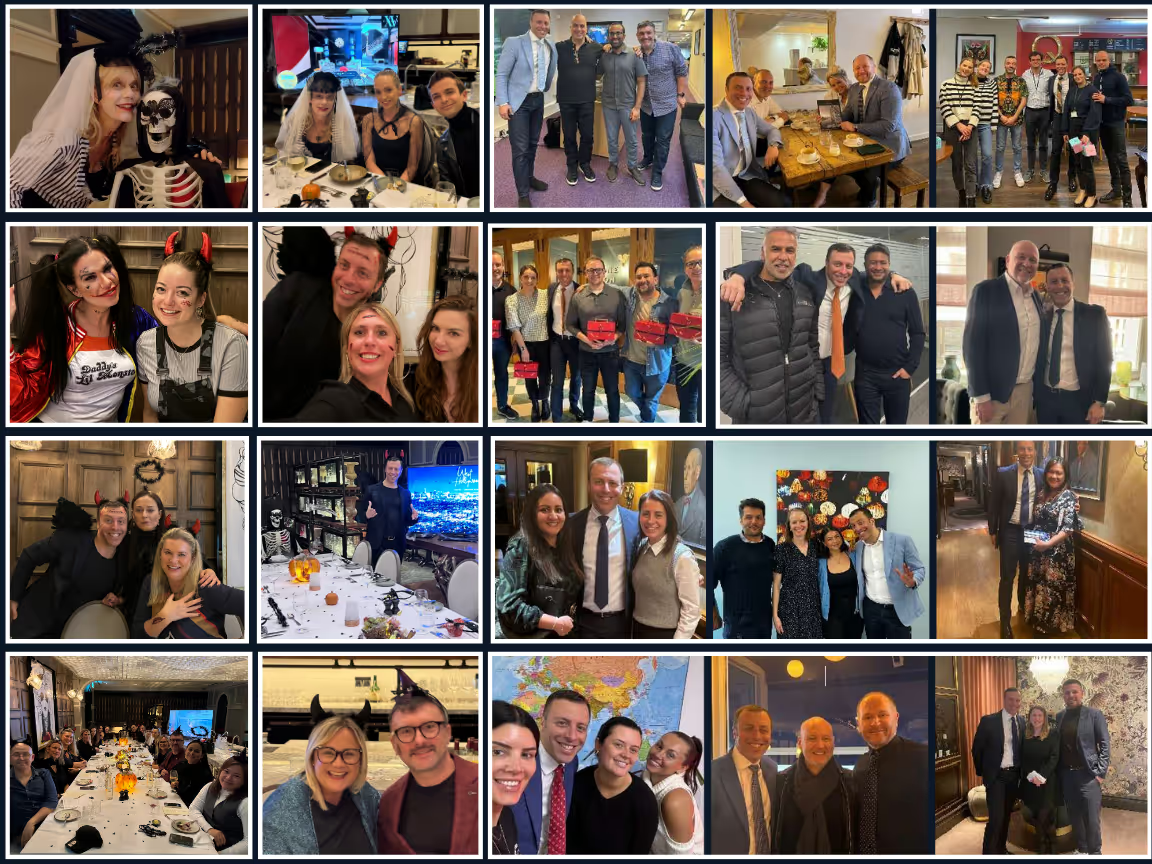
about

us

Founded in 2017 by Managing Director Nunzio Giannone, Luxury Boutique Collections is your gateway to the world’s most prestigious hotels and destinations.
We go beyond hotel representation — we’re here to elevate your presence in the luxury market. From our base in Mayfair, London, we’ve built a reputation by partnering with distinctive properties and elite destinations.
Our mission is to amplify your visibility and success through a personalised and strategic approach. We build meaningful connections, understand your story, and help your brand resonate with today’s most discerning travellers.
Your journey starts here
Our Core Philosophy:
• Personalised Attention: Believing in the power of personal touch, every strategy we develop is customised to reflect the unique qualities of your hotel, ensuring that our approach perfectly aligns with your brand’s ethos and goals.
Who we are:
Luxury Boutique Collections was created with a vision to redefine hotel representation. Our founder, Nunzio Giannone, brought together a team of dedicated professionals who share a passion for the luxury hospitality industry. Together, we embrace a personal approach—taking the time to understand each hotel’s unique story and aspirations, which allows us to represent your property not just as another hotel, but as a unique experience deserving of global attention. Recently, we’ve expanded our portfolio to promote elite destinations.
Our Expertise:
Since our inception, we have specialised in navigating the luxury hotel market across corporate, leisure, MICE, entertainment, and sports segments. Our extensive experience allows us to offer comprehensive marketing solutions tailored to attract the most discerning guests and prestigious events
Our Team’s Promise:
Our team brings a personal commitment to each project. We understand that the essence of luxury lies in the details, meticulously handling every aspect of your sales and marketing representation. Our dedicated team are not just experts in their fields; they are enthusiasts of the luxury lifestyle, eager to share your unique story with the world
Our Team
Behind every great hotel or destination is a team that believes in its story.
At Luxury Boutique Collections, we become an extension of yours — offering tailored sales support, trusted relationships, and a deep understanding of the UK and European markets.
We work closely, act personally, and represent you with heart.
dream




WHAT
WE DO
Our luxury hotel and destination representation services are expertly crafted for boutique properties, upscale hotels, and destinations around the world seeking to boost their visibility and profitability within the luxury market.
This service is particularly well-suited for hotels with limited sales teams, those entering the market for the first time, or established properties and destinations aiming to enhance their outreach and presence in the luxury market within the UK and Europe.
ENGAGEMARKETS
We target affluent markets, focusing on high-net-worth individuals, luxury travel agencies, corporate clients, and niche segments that appreciate and seek the exclusivity and refined experiences these properties and destinations offer.
By leveraging our extensive industry connections and strategic insights, we ensure that our clients attract the right clientele while solidifying their position in the luxury market
Our Process
LISTEN
LISTEN
This initial step ensures that we fully understand and align with your objectives. We begin by setting clear, actionable goals tailored to your specific needs, targeting key markets across the UK and Europe, including:
Create a bespoke PLAN
PLan
We then craft a bespoke tactical action plan designed to fine-tune your brand strategy and substantially increase your market share. This plan is developed with precision, tailored to navigate and capitalise on the complexities of the luxury market.
Sell
SELL
Our team takes an active, hands-on role in selling your property. We engage directly with the market through trade shows, dedicated sales calls, training sessions and marketing. This direct engagement is crucial for establishing your presence and driving results.
Review
REVIEW
The final step involves a rigorous analysis of the outcomes. We measure your results, assess the key drivers of success, and prove the ROI of our efforts by identifying the impact of every action. This continuous evaluation helps refine strategies and ensures sustained growth.
Our Process

Our Process
LISTEN
Set actionable goals that target all major UK and European markets:

Create a bespoke PLAN
Tactical action plan that will fine-tune your brand strategy and increase market share

Sell
Take an active Hands-on role in marketing by

Review
Measure your results

Dhorougly research and aralyce the relevant market, induittry trench, larget audlence.
and competiors to gun vslusble insiges and iorm stranege decsions
Research and Analysis
LISTEN
LISTEN
This initial step ensures that we fully understand and align with your objectives. We begin by setting clear, actionable goals tailored to your specific needs, targeting key markets across the UK and Europe, including:
Planning and Strategy Development
Based on the research findings, develoo a corrgrehenahe glan and strutegy tha algre
wt the butiness goals. This includes outliring objectives, deterining key tactics, and
oreueing a radmap for impilemertacion
Create a bespoke PLAN
PLan
We then craft a bespoke tactical action plan designed to fine-tune your brand strategy and substantially increase your market share. This plan is developed with precision, tailored to navigate and capitalise on the complexities of the luxury market.

Implementation and Execution
Execune the planned strategles and tactics, ensuring proper implementation of
marieting campaigse, inaeies, and actulies. Shis invoes coordinating msources.
Sell
SELL
Our team takes an active, hands-on role in selling your property. We engage directly with the market through trade shows, dedicated sales calls, training sessions and marketing. This direct engagement is crucial for establishing your presence and driving results.

Lorem ipsum dolor sit amet, consectetur adipiscing elit. Suspendisse varius enim in eros elementum tristique.
Evaluation and Optimization
Review
REVIEW
The final step involves a rigorous analysis of the outcomes. We measure your results, assess the key drivers of success, and prove the ROI of our efforts by identifying the impact of every action. This continuous evaluation helps refine strategies and ensures sustained growth.

Let's Grow
Bespoke Sales & Marketing Strategies for Luxury Hotels
Monthly Sales Calls
Bespoke Events & Qualified Fam Trips
ATTENDING industry trade shows
Attending networking events
Distribution of Marketing Materials
Contract Facilitation and RFP Support
Comprehensive Monthly Activity Reports
DIGITAL MARKETING & SOCIAL MEDIA
Quarterly Business Performance Reviews
UI/UX DESIGN
Lorem ipsum dolor sit amet, consectetur adipiscing elit.
UI/UX DESIGN
Lorem ipsum dolor sit amet, consectetur adipiscing elit.
UI/UX DESIGN
Lorem ipsum dolor sit amet, consectetur adipiscing elit.
UI/UX DESIGN
Lorem ipsum dolor sit amet, consectetur adipiscing elit.
UI/UX DESIGN
Lorem ipsum dolor sit amet, consectetur adipiscing elit.
UI/UX DESIGN
Lorem ipsum dolor sit amet, consectetur adipiscing elit.
SERVICES

Tailored specifically to align
with your targets and goals.

Focused outreach to High-end Luxury
Leisure and Groups

In-person meetings within London and the
surrounding area.

Visits to agents and clients outside London, covering
North, South, West, and East UK. (Additional costs for these trips

Organisation of UK
Sales Trips for any member of the Hotel Sales Team.

Organised educational
trips for agents, subject to Hotel’s approval.

Organisation of one annual event
exclusive to your property (Optional and excludes expenses )

Delivery of company products and brochures
to all relevant agents

Detailed summaries of all sales and
marketing activities

Regular evaluations of progress and
updates to the action plan

Representation at key industry
events e.g: ILTM, Virtuoso, Serandipians & any third party events
Let's Grow
PROUD TO REPRESENT
At Luxury Boutique Collections, we take pride in representing a curated selection of the world's most exclusive and luxury properties and destinations. Each is more than just a location; they embody our passion for delivering unparalleled luxury and personalised experiences, and stand as testament to our values, offering distinct cultural and experiential richness that resonates deeply with those who appreciate the finer aspects of travel and accommodation.
A JW Marriott Hotel
Let's Grow
Frequently asked
questions
Who benefits from hotel representation services?
Do you work on a commission basis ?
How does Luxury Boutique Collections deliver personalised service?
In which regions does Luxury Boutique Collections specialiSe?
What market segments does Luxury Boutique Collections CATER?
Does Luxury Boutique Collections provide exclusive representation services in specific cities?
What sets Luxury Boutique Collections apart from other representation companies?
Can Luxury Boutique Collections support the launch of new hotels?
Let's Grow Your Sales
Get in Touch




.avif)






















.png)










.jpg)




























